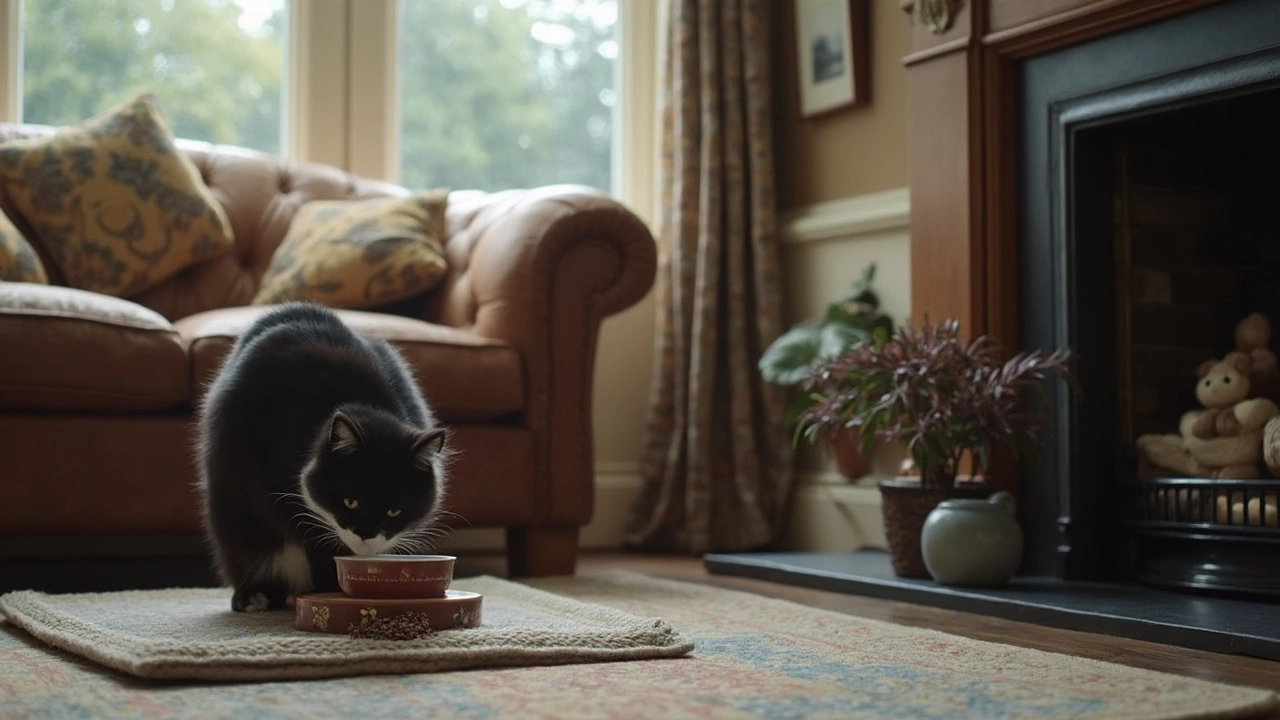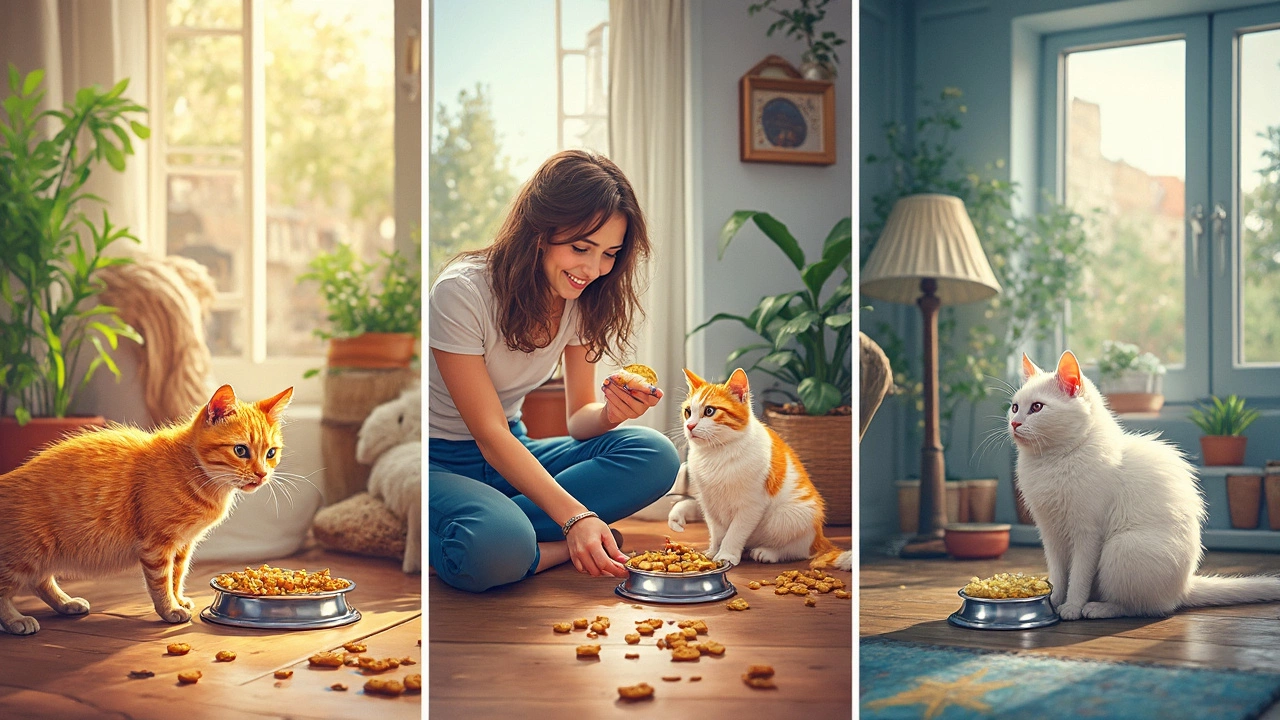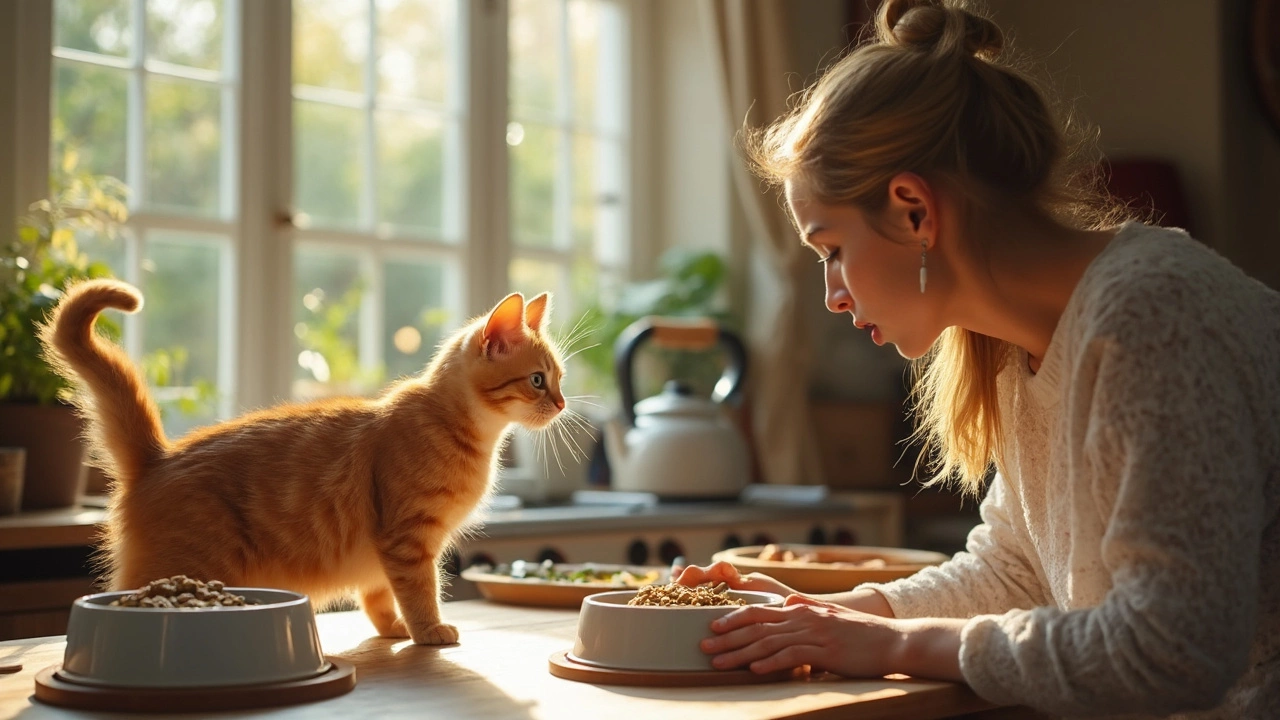Trying to figure out how often your cat should eat? You’re not alone. I remember when Luna—my cat—first moved in, I wondered if I was doing this whole feeding thing right. Food is a big deal for cats. Their schedule can actually make a difference in their weight, energy, and even their mood.
There’s no universal answer that fits every cat. The right feeding routine depends on your cat’s age, health, lifestyle, and frankly, their personality. Some cats like small frequent meals, while others do fine with just two. If you’re staring at cat food packaging scratching your head, don’t worry. There are some clear guidelines to help you figure out what works for your furry buddy.
Whether you’re running after a wild kitten or dealing with a senior set-in-their-ways couch potato, it helps to understand why routine actually matters. The way you serve up their meals could change their eating habits, behavior, and even how often they bug you in the middle of the night for snacks. Let’s make feeding easier, healthier, and a whole lot less confusing.
- Why Feeding Schedule Matters
- Kitten vs Adult: Different Needs
- Factors That Change the Rules
- Creating a Realistic Routine
- Practical Tips for Fuss-Free Feeding
Why Feeding Schedule Matters
If you think cats can graze all day without consequences, you might be in for a surprise. The timing and frequency of meals can actually affect your cat’s health, behavior, and even your wallet if you end up dealing with health issues down the line.
Sticking to a steady feeding schedule helps your cat regulate their metabolism and keeps their energy levels steady. This matters because cats are wired as hunters—they’re meant to eat small, regular meals, not chow down on one giant portion or munch all day. If they’re allowed to graze nonstop, obesity quickly becomes a risk. And chubby cats aren’t just cute—they’re prone to diabetes, arthritis, and heart problems.
According to the Association for Pet Obesity Prevention, about 61% of cats in the U.S. were classified as overweight or obese just last year. That’s a huge portion, and a lot of it comes down to free-feeding and lack of control over mealtimes. Scheduled feeding can make managing their weight so much easier.
| Feeding Style | Common Problems |
|---|---|
| Free-feeding (food always out) | Obesity, picky eating, food waste |
| Scheduled meals (measured portions) | Healthier weight, better routine, easier medication if needed |
Routine also helps reduce stress and keeps your cat from begging at all hours. When Luna knows it’s time to eat, she gets less sneaky about stealing Rex’s treats. Plus, regular mealtimes make it easier to notice if something’s off—like your cat suddenly stops eating, which is often a sign of illness that needs attention.
And let’s not ignore the litter box situation. Consistent feeding means more predictable bathroom habits—super helpful for anyone who doesn’t love surprises on the carpet.
Bottom line: A regular feeding schedule isn’t just about convenience. It’s a cornerstone of your cat’s health and your peace of mind.
Kitten vs Adult: Different Needs
Kittens are basically eating machines. They’re all about growth, which means they need a lot more food—and way more often—than adult cats. A typical kitten doubles its weight in the first few weeks, so tiny meals here and there just won’t cut it. Most vets recommend feeding kittens four times a day up to around six months old. Each meal should be a small portion since their tummies are tiny.
Once your cat hits the six-month mark, things start to change. Their growth slows, and you can gradually move them to two or three meals a day. Adult cats (over one year old) usually do best with two meals spaced out over the day, morning and evening. That’s what I do with Luna. It helps keep her energy steady and those wild midnight zoomies to a minimum.
Take a look at how the feeding routines break down for kittens and adult cats:
| Age | Meals per Day | Type of Food |
|---|---|---|
| 0-6 months (Kitten) | 3-4 | Kitten-specific wet/dry food |
| 6-12 months | 2-3 | Kitten food, transition to adult |
| 1 year and up (Adult) | 2 | Cat food for adults, wet/dry/combination |
Don’t skip the food made just for kittens. It’s packed with protein and calories, plus the right mix of vitamins for growing bodies. If you get lazy and offer adult food too soon, your kitten could miss out on those building blocks.
Adult cats aren’t burning through calories like kittens, so overfeeding quickly turns into extra pounds. If you free-feed (leaving food out all day), watch out—some cats, like Luna, will eat just enough, but others never know when to stop. Measured meals help you keep their weight in check and spot if they stop eating (which can signal illness).
If you just brought home a new ball of fluff or your kitten’s suddenly a full-grown cat, shifting their feeding schedule is simple: slowly space out meals over a week, and offer appropriately sized portions. Check your cat food packaging or ask your vet for how much to serve based on your cat’s weight and age. Cats really notice routines, so feed them at the same times each day if possible—they’ll let you know if you’re late!

Factors That Change the Rules
Cat feeding isn't a one-size-fits-all situation. Schedules can change depending on a few important things like age, activity level, health issues, and whether your cat spends time indoors or outdoors. So before settling on a routine, it’s good to know what’s likely to push you off the standard path.
Health and medical conditions can totally flip your feeding plan upside down. For example, cats with diabetes may need to eat at the same time as their insulin shot, while those with thyroid problems might graze more often. If your kitty gets put on a special diet—say, for kidney or urinary problems—your vet might tell you to feed smaller, frequent meals instead of two big ones.
Then there’s activity level. A lazy indoor cat like Luna naps all day and isn’t burning tons of calories. She does great on two measured meals daily. But a playful kitten or outdoor hunter might need more frequent fuel-ups to match their energy.
Life stage also matters. Kittens have speedy metabolisms and tiny stomachs, so they need three to four small meals, while a healthy adult can usually handle just breakfast and dinner. Senior cats, on the other hand, may lose a bit of appetite or develop dental issues, so sometimes smaller, softer meals get the job done better.
Don’t forget household chaos. Got multiple cats? If one is a gobbler and the other a grazer, you’ll probably need to separate them at mealtime or you’ll have one chubby cat and one cranky, hungry one. Multi-cat homes can mean extra meal planning.
Here’s a look at the big factors that knock cat feeding off the ordinary track:
- Cat’s age (kitten, adult, senior)
- Health issues like diabetes, thyroid, or kidney disease
- Special diets—weight control, prescription food, or food allergies
- Activity level—couch potato vs. wild explorer
- Whether they're indoors, outdoors, or both
- Multi-cat households needing meal supervision
Just for some perspective, check out this quick table. It sums up how needs change depending on the most common situations:
| Situation | Recommended Feedings/Day | Notes |
|---|---|---|
| Healthy Adult (Indoor) | 2 | Measure food to avoid overeating |
| Kitten (Under 6 months) | 3-4 | Smaller, frequent meals for energy |
| Active/Outdoor Cat | 2-3 | Extra calories may be needed |
| Senior Cat | 2-3 | Smaller meals, sometimes softer food |
| Medical Issue (e.g., diabetes) | As directed by vet | Timing food with meds |
So, if something about your cat’s lifestyle or health sounds different than the standard, it’s worth checking with your vet about the best cat food routine before changing anything on your own.
Creating a Realistic Routine
Most people think cats will just figure out when to eat, but setting up a manageable feeding routine actually makes life easier for everyone—trust me, I found this out the hard way with Luna begging at 3 a.m. Let’s talk what works for real homes, with busy schedules, and hungry cats.
If you’re using dry food, you might be tempted to leave the bowl out all day. That’s called free-feeding, and while it’s sometimes okay for grazers, it can lead to weight gain and picky habits. Scheduled meals—usually two to three times a day for adults—are simpler for portion control and build a pattern your cat can rely on. Kittens under six months? They often need three to four small meals a day because their tummies are tiny but their energy is off the charts.
Setting regular feeding times helps your cat’s digestive system. Try to feed at roughly the same hours each day—say morning and evening for adults. If your work life or family is unpredictable, use an automatic feeder so your cat won’t hold a grudge if you’re late.
- Decide on set times: Pick times that fit your daily routine and stick to them if you can.
- Measure out the right amount: Use a measuring cup for accuracy based on the food’s label and your vet’s advice.
- Don’t forget water: Cats on dry food especially need extra water, so keep a clean bowl or even a cat fountain handy.
- Watch for changes: If your cat’s appetite or energy suddenly shifts, check in with your vet. Sudden hunger changes aren’t just a mood; they can signal health issues.
If your cat prefers to snack, you can split portions into several smaller meals instead of bigger ones. Stick to the total recommended amount for the whole day. The feeding schedule isn’t just about food—it’s about building trust and routine, especially for nervous or rescue cats. You’ll both feel more relaxed when food doesn’t feel like a guessing game.

Practical Tips for Fuss-Free Feeding
Keeping your cat’s mealtime smooth isn’t rocket science, but a few smart moves can make a world of difference. Most cats love routine. Setting fixed feeding times each day helps your cat know what to expect and goes a long way in preventing those annoying sunrise wake-up calls. If you’re feeding twice a day, try to stick to the same morning and evening windows every day.
For cats who free-feed (meaning dry food is always out), be careful—too much grazing can lead to weight gain. Measuring portions really matters. Vets recommend using a real measuring cup instead of just eyeballing it. That ensures your buddy doesn’t slowly pack on the pounds. If you have more than one cat, try to feed them in separate spots to stop food stealing and squabbling. Luna is a master at sneaking bites from Rex’s bowl if I’m not paying attention!
Some cats are picky and will snub stale food. If you serve wet food, pick up any uneaten leftovers after 30 minutes to keep things fresh and avoid attracting insects. Dry food can sit out longer, but it’s still best to change it out daily. Water should always be fresh—cats can turn their noses up if their bowl isn’t clean.
Keep the feeding area calm. Big noises or lots of foot traffic can stress cats out, making them eat less or bolt from the bowl. Serving meals in a quiet spot works wonders, especially for shy or nervous eaters. If you need to introduce diet changes, do it slowly—mix a little of the new food in with the old, adding more over about a week. Sudden switches can lead to stomach issues.
- Stick to regular cat food portion sizes—follow the bag’s guide for your cat’s weight, then adjust if your vet says so.
- Clean food and water bowls daily. Stainless steel or ceramic dishes are easier to keep tidy than plastic.
- Use puzzle feeders for cats who eat too fast or need a little extra play and stimulation.
- If your cat begs at the table, ignore them. Feeding scraps or treats from your plate just teaches bad habits (and can upset their tummy).
Tweak things as you go—what works for Luna won’t always be perfect for every cat. When in doubt, check with your vet, especially if your cat seems super hungry all the time or suddenly stops eating. Consistency, attention, and a little cat psychology can turn mealtimes into the easiest part of the day.
